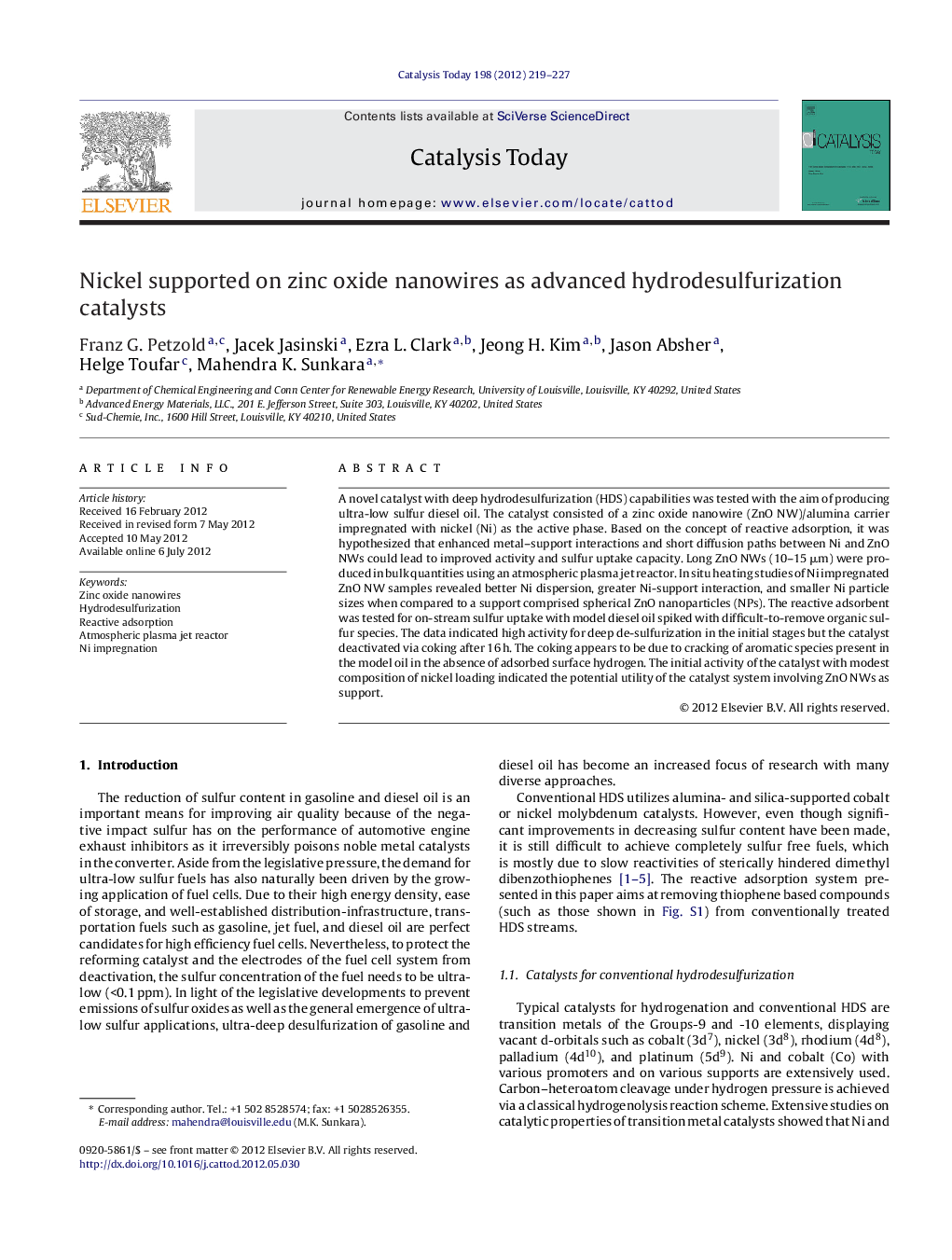| Article ID | Journal | Published Year | Pages | File Type |
|---|---|---|---|---|
| 55208 | Catalysis Today | 2012 | 9 Pages |
A novel catalyst with deep hydrodesulfurization (HDS) capabilities was tested with the aim of producing ultra-low sulfur diesel oil. The catalyst consisted of a zinc oxide nanowire (ZnO NW)/alumina carrier impregnated with nickel (Ni) as the active phase. Based on the concept of reactive adsorption, it was hypothesized that enhanced metal–support interactions and short diffusion paths between Ni and ZnO NWs could lead to improved activity and sulfur uptake capacity. Long ZnO NWs (10–15 μm) were produced in bulk quantities using an atmospheric plasma jet reactor. In situ heating studies of Ni impregnated ZnO NW samples revealed better Ni dispersion, greater Ni-support interaction, and smaller Ni particle sizes when compared to a support comprised spherical ZnO nanoparticles (NPs). The reactive adsorbent was tested for on-stream sulfur uptake with model diesel oil spiked with difficult-to-remove organic sulfur species. The data indicated high activity for deep de-sulfurization in the initial stages but the catalyst deactivated via coking after 16 h. The coking appears to be due to cracking of aromatic species present in the model oil in the absence of adsorbed surface hydrogen. The initial activity of the catalyst with modest composition of nickel loading indicated the potential utility of the catalyst system involving ZnO NWs as support.
Graphical abstractA schematic illustration of reactive adsorption of thiophenic compounds on Ni decorated ZnO NW.Figure optionsDownload full-size imageDownload high-quality image (142 K)Download as PowerPoint slideHighlights► ZnO nanowires, produced in bulk quantities using an atmospheric plasma reactor, were used as the support for Ni nanoparticles. ► The Ni-impregranted ZnO nanowires were tested as reactive adsorption catalyst for deep hydrodesulfurization fuels. ► ZnO nanowires showed better dispersion of Ni particles and stronger metal nanoparticle support interaction when compared to ZnO nanoparticles.
